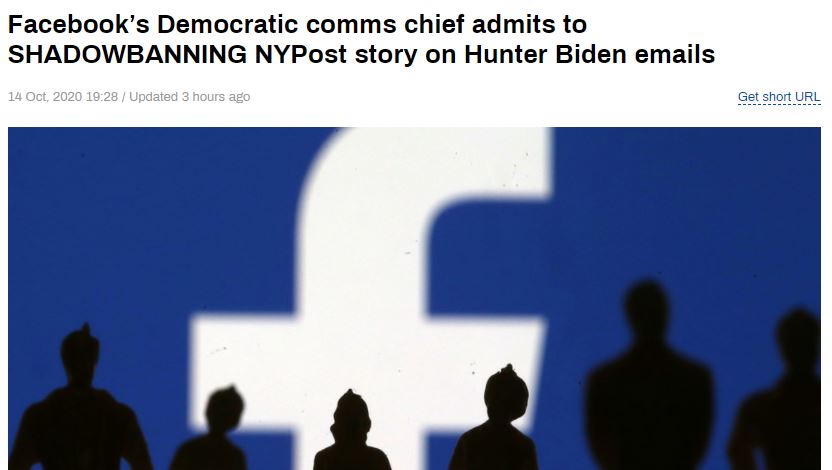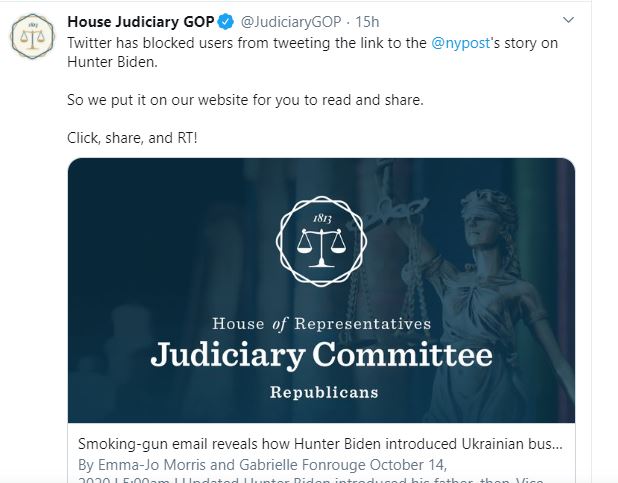Yesterday’s reaction to the New York Post’s story on Hunter Biden reveals that when hacked or dubiously sourced materials are first published by a known entity—particularly a U.S. person or outlet—our only options are bad options. ASD Disinfo Fellow Bret Schafer explains (thread)
After Russia’s hack-and-leak operation in 2016, policies were put in place to ensure that journalists and platforms would not amplify and accelerate disinformation or state-backed info ops. For the most part, news orgs did not fall back into the 2016 trap. https://www.niemanlab.org/reading/connect-the-dots-marty-baron-warns-washington-post-staff-about-covering-hacked-materials/">https://www.niemanlab.org/reading/c...
Yesterday, tech platforms made the unprecedented decision to limit distribution of the NY Post article. But in so doing, they created a secondary effect: the furtherance of a narrative of censorship and political bias.
This creates an obvious Catch-22. Either we let our open information systems be used against us to smear political or geopolitical targets, or we don’t, and create, potentially, a more damaging narrative.
The Russian media’s response—as tracked on Hamilton 2.0—shows that, in either case, it’s a win-win scenario for those peddling hacked or dubiously sourced material, be it the Russians, a known domestic source, or any other actor.
Despite FB& #39;s efforts to reduce the spread of the original story, CrowdTangle data shows 5 of the 20 most shared stories on FB yesterday were related to the Post’s story on Hunter Biden. #7259031a45cc">https://www.forbes.com/sites/abrambrown/2020/10/14/conservatives-bash-facebook-again-over-complaints-that-it-censored-a-controversial-story-about-hunter-biden/ #7259031a45cc">https://www.forbes.com/sites/abr...
This, of course, incentivizes future attempts to interfere in elections through the release of hacked, stolen, forged, or any other damaging material… https://securingdemocracy.gmfus.org/russias-maturing-information-manipulation-playbook/">https://securingdemocracy.gmfus.org/russias-m...
Because as soon as someone publishes the damaging material (and someone will publish it), it sets in motion a chain of events where any play by the media or platforms can be used to the benefit of those running the op.
Unfortunately, this episode highlights the fact that we are not better prepared for Guccifer 3.0, especially if “Guccifer” isn’t an anonymous Twitter account but rather a known US outlet. https://niemanreports.org/articles/as-the-november-election-approaches-are-newsrooms-ready-for-guccifer-3-0/">https://niemanreports.org/articles/...

 Read on Twitter
Read on Twitter



